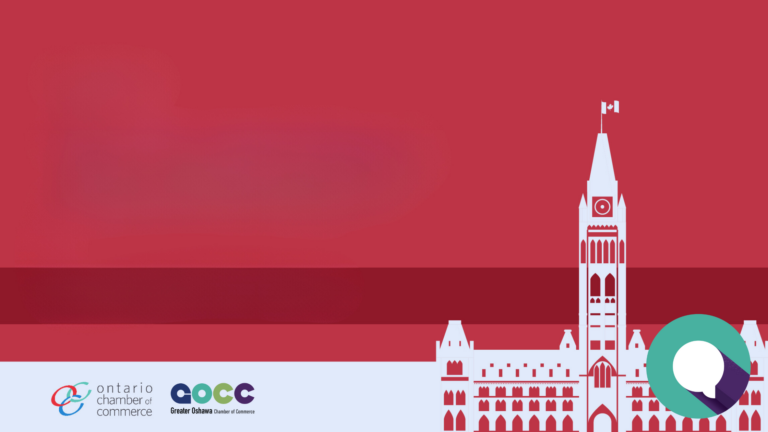Details were provided today by Premier Doug Ford, Christine Elliott, Deputy Premier and Minister of Health, and Dr. David Williams, Chief Medical Officer of Health.
“Our number one priority right now is getting the numbers down and keeping people safe. That’s why, on the recommendation of the Chief Medical Officer of Health, we’re updating the framework with new thresholds so we can slow the spread of this virus,” said Premier Ford. “These adjustments are necessary to respond to the latest evidence we’re seeing and we are prepared to make further adjustments as the health experts continue to review the current public health restrictions. We must do whatever it takes to stop our hospitals from being overwhelmed and protect our most vulnerable.”
The latest modelling shows that if the number of new cases continues to grow at its current rate, the province could register up to 6,500 new cases per day by mid-December. Within the next two weeks the province will likely exceed its intensive care threshold of 150 beds, under any potential scenario.
The framework changes are in response to the current data and trends, and will lower the threshold for each of the five levels for: weekly incidence rates, positivity rate, effective reproductive number (Rt), outbreak trends and the level of community transmission. Based on these new thresholds, the following public health unit regions would be moved to the following levels in the framework:
- Red-Control:
- Hamilton Public Health Services
- Halton Region Public Health
- Toronto Public Health
- York Region Public Health
- Orange-Restrict:
- Brant County Health Unit
- Durham Region Health Department
- Eastern Ontario Health Unit
- Niagara Region Public Health
- Wellington-Dufferin-Guelph Public Health
- Region of Waterloo Public Health
- Yellow-Protect:
- Huron Perth Public Health
- Middlesex-London Health Unit
- Public Health Sudbury & Districts
- Southwestern Public Health
- Windsor-Essex County Health Unit
Please visit Ontario.ca/COVID19 for the full list of public health region classifications that will come into effect as of Monday, November 16, 2020 at 12:01 a.m. Toronto Public Health will move into the framework on Saturday, November 14, 2020 at 12:01 a.m.
For long-term care homes, visitor restrictions will apply to public health regions within the Orange-Restrict and Red-Control levels in the framework. This will go into effect on Monday, November 16, 2020 at 12:01 a.m.
“Over the last week we have seen an alarming shift in the trends of key public health indicators in regions across the province,” said Minister Elliott. “The COVID-19 pandemic continues to evolve, and our government’s response must evolve with it. These updates to the COVID-19 Framework will ensure that the necessary targeted measures are in place in hotspots to help stop the spread of the virus and keep our schools and businesses open. Protecting the health and well-being of Ontarians remains our top priority.”
The framework takes a gradual approach that includes introducing preventative measures earlier to help avoid broader closures and allow for additional public health and workplace safety measures to be introduced or removed incrementally. It categorizes public health unit regions into five levels: Green-Prevent, Yellow-Protect, Orange-Restrict, Red-Control, and Lockdown being a measure of last and urgent resort.
Ontario’s COVID-19 Response Framework has been designed to:
- Be responsive and flexible to latest data;
- Introduce preventative measures earlier to help limit the spread of COVID-19, while keeping schools open, supporting mental health, protecting our most vulnerable, and keeping businesses open where possible;
- Recognize that every community is different and provide the flexibility to allocate resources where they are needed most; and
- Support the ability for local officials to tailor restrictions in their communities based on regional circumstances. The framework serves as a baseline that municipalities and local medical officers of health can build on by imposing additional restrictions or targeted requirements in their region, on top of the public health and workplace safety measures required at their specific level.
“The latest modelling shows a concerning situation in our province. Worldwide we are seeing COVID-19 cases continue to rise, and Ontario is no exception,” said Dr. Williams. “It remains critical that everyone continue to strictly follow public health advice to protect yourself and your community. We bent the curve during the first wave and, although it will be challenging, we can do so again through the collective actions of all Ontarians.”
Assignments to the current levels would last for a minimum of 28 days or two-incubation periods, at which time the status of these public health unit regions will be reassessed on a weekly basis. However, movement to a more restrictive zone will be considered sooner if there are rapidly worsening trends.
Since the beginning of the outbreak, Ontarians have been playing their part to help bend the curve and stop the spread of the virus. Today more than ever, it is critical for everyone to follow public health advice and strictly comply to the restrictions applied in their regions, especially when connecting with others. The following recommendations apply to all public health unit regions in the province:
- Avoid social gatherings and limit close contacts to your household or the people you live with;
- Adhere to the restrictions in your region on public and private gatherings;
- Maintain two metres of physical distancing from everyone else;
- Wear a face covering indoors and wear one outdoors if physical distancing may not be maintained or if wearing one is required;
- Wash your hands thoroughly and regularly;
- Stay home if you have COVID-19 symptoms, even if they are mild;
- Cover your cough;
- Get tested if you have symptoms compatible with COVID-19, or if you’ve been advised of exposure by your local public health unit or through the COVID Alert mobile app;
- Individuals and families from higher transmission regions should avoid travel to lower transmission regions, except for essential reasons; and
- Download the COVID Alert mobile app.
In addition, as the province continues to expand access to real-time data, enhancements have been made to Ontario.ca/coronavirus, Ontario’s one-stop shop for information on COVID-19. Beginning today, users will now be able to view new, active, resolved, deceased, and total cases, by public health unit, on a map. In addition, the website will now provide Ontarians with an effective reproduction number, as well as enhanced long-term care data. The government will continue to update the dashboard with relevant data to ensure as much transparency as possible. This information will better help businesses, organizations and local communities access key information to prepare in advance for any changes in their region.
Quick Facts
- Find out what level and which regional public measures are in place for your area.
- The Ontario government has developed a $2.8 billion COVID-19 fall preparedness plan, Keeping Ontarians Safe: Preparing for Future Waves of COVID-19, to ensure the province’s health care, long-term care and education systems are prepared for the immediate challenges of the fall, including a second wave of COVID-19 and the flu season.
- The Ontario government is making $300 million available to businesses required to close or significantly restrict services in areas subject to modified Stage 2 (Red–Control level) public health restrictions, or, going forward, in Lockdown. As a result, businesses in these areas will be able to apply for temporary property tax and energy cost rebates directly to the province through a single, online application portal.
- If you are concerned you were exposed to COVID-19 or have symptoms, take the online COVID-19 self assessment.
- Get tested if you have symptoms compatible with COVID-19, or if you have been advised of exposure by your local public health unit or through the COVID Alert app. Visit Ontario.ca/covidtest to find the nearest testing location.
- To stay safe, you can download the COVID Alert App free from the Apple and Google Play app stores.
Additional Resources
- Ontario Releases COVID-19 Response Framework to Help Keep the Province Safe and Open
- Property Tax and Energy Cost Rebates
- Visit Ontario’s website to learn more about how the province continues to protect the people of Ontario from COVID-19.



